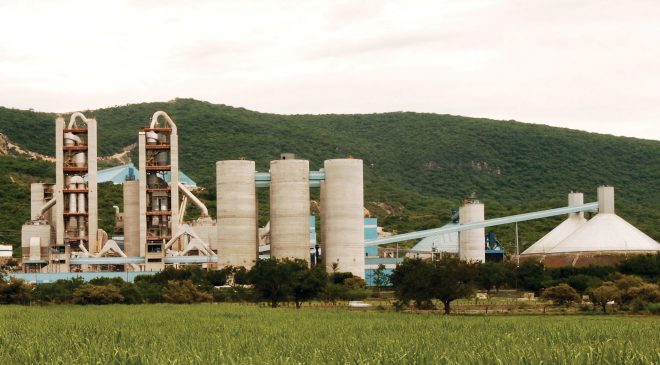By Mauro Nogarin
This report was written prior to the onset of COVID-19 – Ed

According to the information in the new bulletin of Banco de México (Banxico), in the course of this year the recovery of the Mexican economy will be more complicated. In fact, compared to January, private sector experts now forecast the growth of the Gross Domestic Product (GDP) now decreased from 1.10 to 0.91%.
This means that the new growth expectation for 2020 is the lowest of that registered since January 2019, when it reached 1.92%.
The fall in GDP was generated by the decrease in the production of secondary activities, which include manufacturing, construction, mining and energy activities, which fell 1.8% compared to 2018.
A result far from the 4% growth forecast announced by President Lopez Obrador.
Regarding the construction market, in early March, the Mexican Chamber of Construction (CMIC) announced the signing of an agreement with the Secretariats of Finance and Public Credit (SHCP), of Economy (SE) and of Agrarian, Territorial and Urban Development (SEDATU) to reactivate the sector.
In Mexico, the cement industry is still concentrated in a group of six companies that dominate the national market today: Cemex, Grupo Cementos Chihuahua, Cemento Moctezuma, Holcim-Apasco, Cruz Azul and Cementos Fortaleza. Taken together, these companies have a production capacity of around 55 million tpy through 35 cement plants installed throughout the country.
 According to statistics released by the Statistical Institute of Mexico (INEGI) in 2019, the annual average production of gray cement was 3.32 million tons, while the previous year it was 3.55, thus registering a decrease of 6.92%. This means that currently the Mexican cement industry is working at 60% of its installed capacity.
According to statistics released by the Statistical Institute of Mexico (INEGI) in 2019, the annual average production of gray cement was 3.32 million tons, while the previous year it was 3.55, thus registering a decrease of 6.92%. This means that currently the Mexican cement industry is working at 60% of its installed capacity.
The marked contraction in cement volumes began in late 2018. It also was a result of various local factors, including the cancellation of the Mexico City airport project in Texcoco and the weak economic conditions of last year mentioned at the beginning. In addition, the constant fall in the construction of new homes due to the reduction of the federal subsidy, as well as the lower number of works to the national highway system, and the partial suspension of several commercial and residential construction projects in Mexico City, contributed to the stagnation conditions of this important sector.

With these data, it is confirmed that the Mexican cement industry has not yet recovered, as certain government decisions have weakened investor confidence in the last 12 months and continue to affect private sector investment.
Regarding public works for 2020, the Ministry of Communications and Transportation published the call for 571 tenders for a total amount of $1.500 million. These works are related to the periodic maintenance of roads, routine maintenance of bridges, and reconstruction of bridges.
In addition, at the end of October the splitting of the highway near the Santa Catarina viaduct was also confirmed, for an amount of $240 million. This 7.9-km stretch is added to the Monterrey-Saltillo highway, and is the first of five highway projects with a total investment of $950 million.
Although the only work that could absorb a significant amount of cement is the construction of the Dos Bocas refinery that will process 400,000 barrels of oil per day. A work financed by Citibanamex and that will be carried out almost exclusively by the Mexican private sector with an investment of $12 billion dollars in a period of eight years.
The only measure that the producers applied to encourage the consumption of cement was that the general index of the prices to the producer of the materials for the construction of 2019, fell 1.5% compared to the previous year. This drop-in input prices were also the first reduction in six years, since in 2013 the cost of cement fell 6.4%.
Although the cement industry in Mexico is facing a difficult moment, Holcim announced in February the investment of $50 million to expand its distribution network in the country, where it is interested in the infrastructure projects of the new Mexican government. However, it considers its cement and concrete plants to increase their production capacity, move towards reducing emissions and improve their efficiency.
Mauro Nogarin is Cement Americas’ Latin American contributor. From 1997 to 2001 he was a reporter for the Italian news agency ASCA from Germany to follow the economic events of ECOFIN. At the same time, he began a strong partnership with the Italian magazine Focus with issues related to European scientific research. Back in Italy after six years of residence in the city of Heidelberg, Germany, he worked from Italy for the weekly Stern and Bild Zeitung. Since 2005, he has lived in Bolivia and worked with the Italian geopolitics review Limes, the Italian gas and oil journal Staffetta Quotidiana, the Colombian oil magazine Petroleo Internacional, the German RE Sun and Energy, the U.S. magazine Renewable Energy World (Pennwell), the World Energy Project (Università di Bologna), Pan Americana Construction magazine and World Oil magazine. He can be reached at [email protected].

